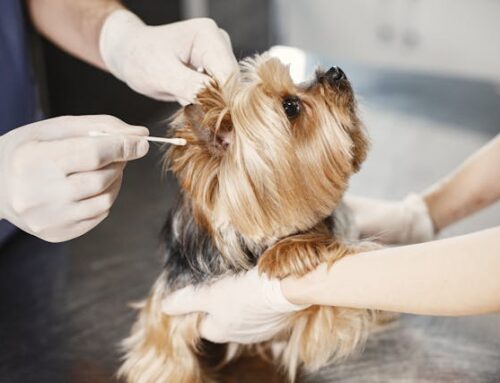Introduction: Teddy Bear Dogs

Teddy bear dogs, a term used to describe a variety of small, fluffy dog breeds, have captured the hearts of many with their adorable appearance and affectionate nature. But are these charming canines truly suited for family life?
In this article, we’ll delve into the characteristics of teddy bear dogs to determine if they make great family pets. From their temperament and size to their exercise needs and compatibility with children, we’ll explore what it’s like to have a teddy bear dog as part of your family.
Whether you’re considering adding one to your household or simply curious about these delightful breeds, join us as we uncover the truth about teddy bear dogs and their family-friendly nature.
Definition of Teddy Bear Dogs
Teddy bear dogs are a group of small, toy dog breeds known for their fluffy, teddy bear-like appearance. These breeds are typically a mix of Bichon Frise, Shih Tzu, Poodle, and sometimes other breeds, resulting in a soft, curly coat and an endearing, expressive face.
Their small size, cute looks, and gentle demeanor make them popular companions for families, singles, and seniors alike. Teddy bear dogs are known for their loving and affectionate nature, often forming strong bonds with their owners.
Popular Breeds Considered Teddy Bear Dogs
Several dog breeds are often referred to as teddy bear dogs due to their adorable appearance and cuddly nature. The Shih Tzu is one such breed, known for its long, flowing coat and affectionate personality. Another popular teddy bear dog breed is the Bichon Frise, recognized for its fluffy white coat and cheerful disposition.
Additionally, the Havanese is often included in this category, valued for its silky fur and playful demeanor. Finally, the Poodle, particularly the Toy and Miniature varieties, is also considered a teddy bear dog for its curly coat and charming personality.

What Makes Teddy Bear Dogs Family-Friendly?
Temperament and Personality Traits
Teddy bear dogs are renowned for their family-friendly temperament and personality traits. They are typically affectionate, loving, and enjoy being around people, making them excellent companions for families of all sizes. These dogs are often gentle and patient, particularly with children, making them ideal for households with kids.
Additionally, teddy bear dogs are known for their playful nature, bringing joy and entertainment to the whole family. Their adaptability and easygoing demeanor make them a popular choice for families seeking a furry friend to join their home.
Size and Adaptability to Living Spaces
Teddy bear dogs are typically small to medium in size, making them well-suited for families living in apartments or houses with limited space. Their compact size allows them to thrive in various living environments, including urban apartments and suburban homes. Despite their small stature, teddy bear dogs are often energetic and enjoy indoor play, making them adaptable to indoor living.
Their size also makes them easy to transport, whether it’s for a family vacation or a trip to the park. Overall, their size and adaptability make teddy bear dogs a great choice for families looking for a pet that can comfortably fit into their lifestyle.
Interaction with Children and Other Pets
Teddy bear dogs are known for their friendly and sociable nature, making them great companions for children. They are often patient and gentle, which is ideal for families with young kids. Teddy bear dogs also tend to get along well with other pets, including dogs and cats, especially if they are properly socialized from a young age.
Their playful and affectionate demeanor makes them a joy to have around, creating a harmonious environment for the whole family.
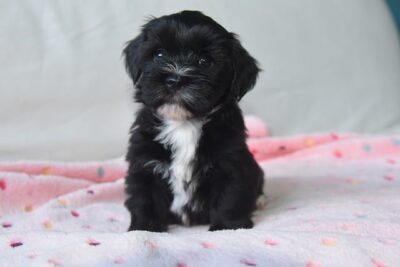
Understanding the Teddy Bear Dog Breeds
Breeds That Are Often Called Teddy Bear Dogs
Understanding the teddy bear dog breeds involves recognizing the specific breeds that are often referred to as teddy bear dogs. These breeds are typically small in size and have a fluffy, cuddly appearance reminiscent of a teddy bear. Common examples of breeds considered teddy bear dogs include the Shih Tzu, Bichon Frise, Poodle, and Havanese.
These breeds are known for their charming looks and affectionate nature, making them popular choices for families and individuals seeking a lovable companion. While not officially recognized as a breed group, the term “teddy bear dog” has become synonymous with these delightful and adorable breeds.
History and Origin of These Breeds
The teddy bear dog breeds have a fascinating history that dates back several centuries. Many of these breeds, such as the Shih Tzu and Bichon Frise, have ancient origins, with histories that can be traced back to royalty and nobility. These breeds were often kept as companions and were highly prized for their affectionate nature and charming appearance.
The Poodle, another popular teddy bear dog breed, has a long history as a hunting dog, known for its intelligence and versatility. Over time, these breeds were bred for their companionable traits, resulting in the lovable teddy bear dogs we know today.
Common Physical Characteristics
Teddy bear dog breeds share several common physical characteristics that contribute to their adorable appearance. These breeds often have a small to medium size, with a sturdy build and a fluffy, soft coat that resembles a teddy bear. They typically have round, expressive eyes and a cute, button nose that adds to their charming look.
Teddy bear dogs often have floppy ears that frame their face and give them an endearing expression. Overall, these physical traits contribute to the irresistible appeal of teddy bear dog breeds.
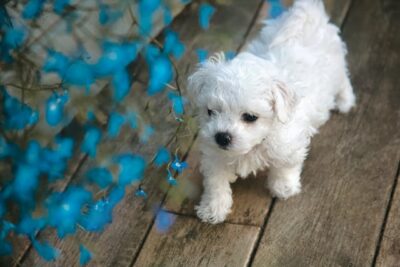
Teddy Bear Dogs vs. Other Breeds
Contrasting Traits with Traditional Breeds
Teddy bear dogs differ from traditional breeds in several key ways, particularly in terms of size, coat type, and temperament. While traditional breeds like Labrador Retrievers and German Shepherds are known for their larger size and more utilitarian appearance, teddy bear dogs are smaller and have a more toy-like appearance.
Additionally, teddy bear dogs often have a soft, fluffy coat that requires regular grooming, whereas traditional breeds may have shorter, easier-to-maintain coats. In terms of temperament, teddy bear dogs are often bred for companionship and tend to be more affectionate and less energetic than some traditional breeds, making them great for families and individuals seeking a cuddly, low-energy pet.
Comparing with Other Popular Family-Friendly Breeds
When comparing teddy bear dogs with other popular family-friendly breeds like the Labrador Retriever and Golden Retriever, several key differences emerge. While Labradors and Golden Retrievers are known for their larger size and more active nature, teddy bear dogs are smaller and tend to be more adaptable to apartment living.
Additionally, teddy bear dogs often have a hypoallergenic coat, making them a better choice for families with allergies compared to breeds like Labs and Goldens. In terms of temperament, teddy bear dogs are often more affectionate and less energetic than these traditional family-friendly breeds, making them a great choice for families seeking a calmer, more cuddly companion.

Training and Socialization
Training Needs for Teddy Bear Dogs
Training and socialization are crucial for teddy bear dogs to ensure they grow up to be well-behaved and balanced companions. Despite their small size, teddy bear dogs benefit from basic obedience training to learn commands such as sit, stay, and come. Positive reinforcement methods work well with these breeds, as they respond best to praise and rewards.
Socialization is also important to expose them to different people, animals, and environments from a young age, helping them become confident and friendly adults. With proper training and socialization, teddy bear dogs can grow into loving and well-adjusted family members.
Importance of Early Socialization
Early socialization is crucial for teddy bear dogs to develop into well-rounded and confident companions. Exposing them to various people, animals, and environments during their critical socialization period (usually between 3 and 14 weeks of age) helps prevent fearfulness and aggression later in life.
Positive experiences during this time can shape their behavior positively, making them more adaptable and sociable pets.
Tips for Training Teddy Bear Dogs
Consistency is key when training teddy bear dogs, so establish a regular routine and stick to it. Use positive reinforcement techniques like treats, praise, and toys to motivate and reward good behavior.
Keep training sessions short and fun to maintain their attention and prevent boredom. Lastly, be patient and understanding, as teddy bear dogs respond best to gentle guidance and encouragement.

Grooming Requirements
Coat Types and Maintenance
Teddy bear dogs have a variety of coat types, including curly, wavy, or straight, which require regular grooming to keep them looking their best. Depending on the breed, their coats may be long or short, but all require regular brushing to prevent matting and tangling.
Additionally, teddy bear dogs often need professional grooming every 4-6 weeks to maintain their coat’s health and appearance. Regular grooming not only keeps their coat looking beautiful but also helps prevent skin issues and keeps them comfortable.
Regular Grooming Routine
A regular grooming routine is essential for teddy bear dogs to keep their coat healthy and mat-free. Brushing their coat several times a week helps prevent tangles and mats, especially for breeds with longer fur. Bathing should be done every 4-6 weeks or as needed, using a gentle dog shampoo to maintain their coat’s health and shine.
Additionally, regular grooming sessions provide an opportunity to check for any signs of skin issues or health problems.
Potential Allergies and Shedding
Teddy bear dogs are often considered hypoallergenic due to their low shedding coat, which can be a great choice for individuals with allergies. However, it’s important to note that no dog is completely hypoallergenic, and some individuals may still be allergic to teddy bear dogs.
While they shed less than other breeds, regular grooming is still necessary to prevent matting and maintain their coat’s health. If allergies are a concern, spending time with a teddy bear dog before bringing one home can help determine if they trigger any allergic reactions.
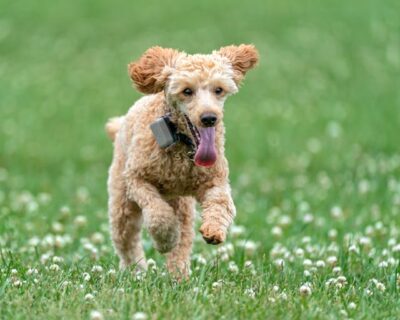
Exercise and Playtime
Exercise Needs of Teddy Bear Dogs
Despite their small size, teddy bear dogs still require regular exercise to stay healthy and happy. Daily walks and play sessions in a fenced yard or park are ideal for meeting their exercise needs.
Interactive toys and games that stimulate their mind and body are also great for keeping them active and engaged. It’s important to tailor their exercise routine to their size and energy level to prevent obesity and promote overall well-being.
Suitable Activities for Different Teddy Bear Breeds
Teddy bear dog breeds, such as Shih Tzus and Bichon Frises, enjoy activities that are gentle yet engaging due to their smaller size and more moderate energy levels. Short walks around the neighborhood or in a local park are great for keeping them active without overexerting them.
Indoor playtime with soft toys or interactive games can also provide mental stimulation and physical activity, especially during colder or rainy days. Overall, tailoring activities to their size and energy level ensures teddy bear dogs stay healthy and happy.
Importance of Regular Exercise for Health and Behavior
Regular exercise is crucial for the health and well-being of teddy bear dog breeds. It helps maintain a healthy weight, strengthens muscles, and improves cardiovascular health. Additionally, regular exercise can prevent behavioral issues such as excessive barking, chewing, or digging, as it helps release pent-up energy and keeps them mentally stimulated.
Overall, incorporating regular exercise into their routine is essential for ensuring teddy bear dogs are happy, healthy, and well-behaved.

Health Considerations
Common Health Issues in Teddy Bear Dogs
While teddy bear dogs are generally healthy breeds, they may be prone to certain health issues common to their parent breeds. Dental problems, including tooth decay and gum disease, are more prevalent in small breeds due to their size and crowded teeth.
Additionally, respiratory issues, such as tracheal collapse, can affect breeds with short snouts like the Shih Tzu or Pekingese. Regular veterinary check-ups, along with proper dental care and monitoring for respiratory issues, can help prevent or manage these health concerns in teddy bear dogs.
Regular Veterinary Care and Check-ups
Regular veterinary care is essential for maintaining the health and well-being of teddy bear dogs. Annual check-ups allow veterinarians to monitor their overall health, detect any potential issues early, and provide necessary vaccinations.
Teddy bear dogs may also benefit from regular dental cleanings to prevent dental problems, which are common in small breeds. Overall, regular veterinary care helps ensure teddy bear dogs live long, healthy lives.
Tips for Maintaining Good Health
To maintain good health in teddy bear dogs, it’s important to provide a balanced diet suitable for their size and energy level. Regular exercise helps keep them fit and prevents obesity, which can lead to various health issues.
Additionally, regular grooming helps prevent skin problems and keeps their coat healthy. Finally, scheduling regular veterinary check-ups ensures early detection and treatment of any potential health issues.

Integrating a Teddy Bear Dog into Your Family
Preparing Your Home for a New Dog
Before bringing your new teddy bear dog home, it’s important to prepare your living space. Ensure you have a cozy bed, food and water bowls, and plenty of toys ready for their arrival.
Puppy-proofing your home by removing any potential hazards or items that could be chewed is also essential. Setting up a designated potty area and establishing a routine can help your new dog adjust to their new environment more easily.
Introducing Your Teddy Bear Dog to Children and Other Pets
When introducing your teddy bear dog to children, it’s important to supervise their interactions and teach children how to properly handle and interact with the dog. Allow them to approach the dog slowly and calmly, and always supervise their interactions to ensure they are gentle and respectful.
When introducing your teddy bear dog to other pets, start with a controlled introduction in a neutral space and monitor their interactions closely. Gradually increase their time together under supervision to ensure they get along well.
Creating a Safe and Comfortable Environment
Creating a safe and comfortable environment for your teddy bear dog is essential for their well-being. Provide a cozy bed in a quiet corner of your home where they can rest undisturbed.
Ensure there are no hazards such as electrical cords or small objects that they could chew on. Additionally, make sure they have access to fresh water and a variety of toys to keep them entertained.
Conclusion
Summary of Key Points
- Definition: Teddy bear dogs are small, fluffy breeds known for their cuddly appearance.
- Popular Breeds: Shih Tzu, Bichon Frise, Poodle, and Havanese are commonly considered teddy bear dogs.
- Family-Friendly Traits: They are affectionate, gentle with children and other pets, and adaptable to various living spaces.
- Training and Socialization: Teddy bear dogs benefit from training and early socialization.
- Grooming: Regular grooming is necessary to maintain their coat.
- Exercise: They require regular exercise to stay healthy.
- Health Considerations: They may be prone to dental and respiratory issues, requiring regular veterinary care.
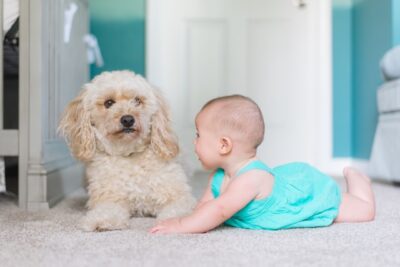
Final Thoughts on the Family-Friendliness of Teddy Bear Dogs
Teddy bear dogs are indeed family-friendly companions, offering love, affection, and companionship to households of all sizes. Their small size, gentle demeanor, and adaptability make them ideal for families, singles, and seniors alike. With proper care, training, and socialization, teddy bear dogs can make wonderful additions to any family, bringing joy and warmth to their new homes.
If you’re looking for a family-friendly Teddy Bear Dog, check out our puppies for sale in Florida and surrounding areas. Our puppies are thoughtfully bred and raised by reputable breeders. From day one, we value and adore each and every charming canine in our care. From regular health checks to socialization and affectionate interaction, we guarantee that the puppy you receive will meet your expectations.
Frequently Asked Questions (FAQs): Teddy Bear Dogs
- Q: What are teddy bear dogs?
- A: Teddy bear dogs are small, fluffy breeds known for their adorable appearance, resembling a teddy bear. They are a mix of Bichon Frise, Shih Tzu, Poodle, and sometimes other breeds.
- Q: Why are teddy bear dogs considered perfect for families?
- A: Teddy bear dogs are known for their gentle and affectionate nature, making them great companions for families with children. They are also adaptable to various living spaces, making them suitable for apartment dwellers.
- Q: Are teddy bear dogs good with children?
- A: Yes, teddy bear dogs are generally good with children. They are patient and gentle, making them ideal playmates for kids.
- Q: Do teddy bear dogs require a lot of grooming?
- A: Yes, teddy bear dogs have a fluffy coat that requires regular grooming to prevent matting and tangles. Regular brushing and occasional professional grooming are necessary.
- Q: Do teddy bear dogs have any health issues?
- A: While generally healthy, teddy bear dogs may be prone to dental problems and respiratory issues due to their small size and facial structure. Regular veterinary check-ups are important to maintain their health.
- Q: Do teddy bear dogs need a lot of exercise?
- A: Teddy bear dogs do not require a lot of exercise but benefit from daily walks and playtime to stay healthy and happy.
- Q: Are teddy bear dogs good for first-time dog owners?
- A: Yes, teddy bear dogs can be good for first-time dog owners due to their friendly nature and adaptability. However, proper training and socialization are still important.
- Q: Where can I find teddy bear dogs for adoption?
- A: Teddy bear dogs can often be found in shelters and rescue organizations. You can also check with reputable breeders or adoption websites.
- Q: Are teddy bear dogs hypoallergenic?
- A: Some teddy bear dogs, particularly those with a poodle mix, are considered hypoallergenic. However, no dog is completely hypoallergenic, so it’s important to spend time with the dog before bringing them home if you have allergies.
- Q: What should I consider before getting a teddy bear dog?
- A: Before getting a teddy bear dog, consider your lifestyle, living space, and the time you can dedicate to grooming and exercise. Additionally, ensure you are prepared for the financial responsibility of owning a dog.



